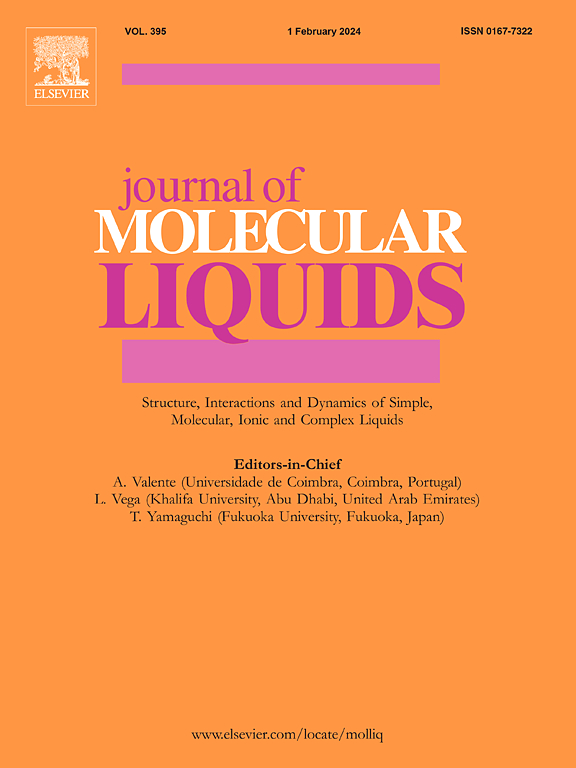Delineating the effect of trehalose nanoparticles on aggregation pattern of apo-α-lactalbumin protein: A nano-approach towards counteracting proteinopathies
IF 5.3
2区 化学
Q2 CHEMISTRY, PHYSICAL
引用次数: 0
Abstract
Investigation of protein aggregation is a challenging and daunting task as it is associated with many amyloid-related diseases like Alzheimer’s, Parkinson’s diseases, etc. Sugar-based osmolytes are known to stabilize proteins under stress, however, their role in inhibiting protein aggregation is ambiguous. The role of molecular trehalose on the aggregation pattern of apo-alpha-lactalbumin protein (apo-α-LA) was studied earlier in our lab. In this study, we have utilized trehalose nanoparticles (TNPs) as an anti-aggregation agent against the thermally aggregated apo-α-LA. The effect of TNPs on the aggregation profile of apo-α-LA was observed by multi-spectroscopic and microscopic approaches, wherein UV–Vis spectroscopy, ThT assay, ANS fluorescence as well as Rayleigh scattering demonstrated that TNPs effectively prevent apo-α-LA aggregation when compared with molecular trehalose. Further validation was carried out with confocal microscopy that also supported the role of TNPs in preventing aggregation of apo-α-LA. Here, the effect of TNPs on the aggregation pattern of apo-α-LA was found to be a better than molecular trehalose, which advocates the application of nanotechnology to counter neurodegeneration. We believe that the inferences drawn from this study may suggest that the nanoparticle form of biocompatible sugar-related osmolytes can act as anti-aggregation agents toward protein aggregation.

求助全文
约1分钟内获得全文
求助全文
来源期刊

Journal of Molecular Liquids
化学-物理:原子、分子和化学物理
CiteScore
10.30
自引率
16.70%
发文量
2597
审稿时长
78 days
期刊介绍:
The journal includes papers in the following areas:
– Simple organic liquids and mixtures
– Ionic liquids
– Surfactant solutions (including micelles and vesicles) and liquid interfaces
– Colloidal solutions and nanoparticles
– Thermotropic and lyotropic liquid crystals
– Ferrofluids
– Water, aqueous solutions and other hydrogen-bonded liquids
– Lubricants, polymer solutions and melts
– Molten metals and salts
– Phase transitions and critical phenomena in liquids and confined fluids
– Self assembly in complex liquids.– Biomolecules in solution
The emphasis is on the molecular (or microscopic) understanding of particular liquids or liquid systems, especially concerning structure, dynamics and intermolecular forces. The experimental techniques used may include:
– Conventional spectroscopy (mid-IR and far-IR, Raman, NMR, etc.)
– Non-linear optics and time resolved spectroscopy (psec, fsec, asec, ISRS, etc.)
– Light scattering (Rayleigh, Brillouin, PCS, etc.)
– Dielectric relaxation
– X-ray and neutron scattering and diffraction.
Experimental studies, computer simulations (MD or MC) and analytical theory will be considered for publication; papers just reporting experimental results that do not contribute to the understanding of the fundamentals of molecular and ionic liquids will not be accepted. Only papers of a non-routine nature and advancing the field will be considered for publication.
 求助内容:
求助内容: 应助结果提醒方式:
应助结果提醒方式:


